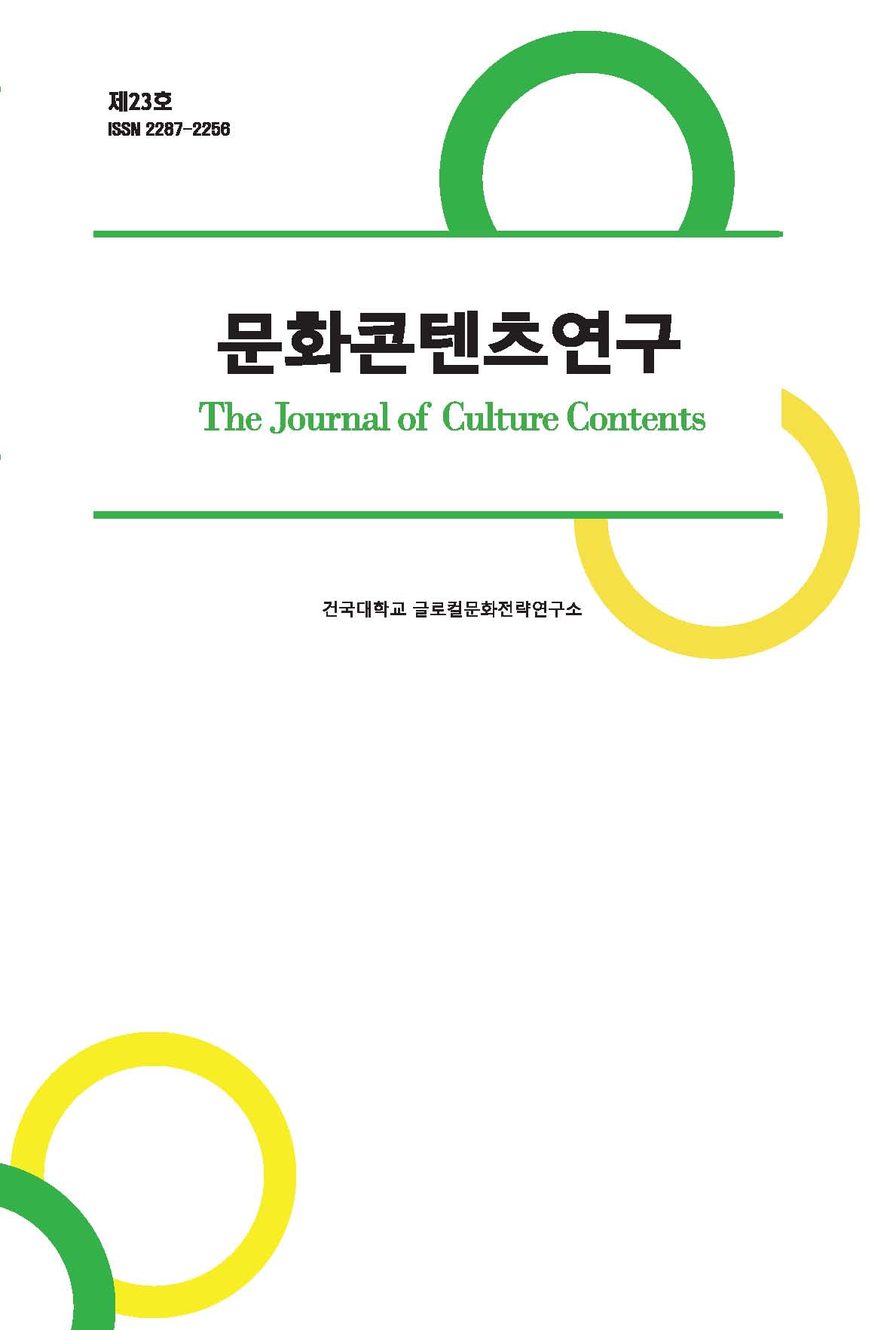Research Article
Abstract
References
Information
Corona 19 (Covid 19) is forcing a “distance” from everything. Meeting with museum exhibits was no exception including cultural heritage. All of the museum and the outdoor exhibition zone of cultural relics, which are the main cultural bases for encountering cultural heritage are closed. According to a survey by UNESCO and the International Museums Council (ICOM), most of the world’s museums were closed at the peak of coronavirus at the end of April, and most of the museum workers work from home. This situation brought about a rapid transition to an online (LAN) exhibition that promotes the Zipcock cultural life at once. Google Art & Culture’s service expansion is a representative example, and digital content has become the overwhelming mainstream by creating an equation of online content, exposing various problems.
However, in online content, the nature of Homo Ludens does not satisfy the desire for direct communication with the liveness of museum exhibitions. Now, although uncomfortable” by means of digital technology in order to cope with the distorted situation that takes un-tact for granted, it is necessary to reinforce the concept of “digi-tact” that “confronts the original value of spatial content. on-off line fusion Digi-log exhibition contents based on the existing “Digital Museum” are newly presented at this point,
“Digital Museum” said, “It does not create a virtual museum, but rather puts emphasis on actively using computers (digital exhibitions) in a real museum.” The corona pandemic variable should be applied to the convergence of the four major spaces (physical space, electronic space, ubiquitous space, and user experience space) discussed in this project. To this end, the concept of “touchless-on” was increased from “touchs-on” to digital devices that are common in exhibition media. we propose an exhibition experience plan that allows viewers to realize their confrontation and individuality with the exhibits based on DigiTact in the era of corona coexistence by actively introducing the ‘AI based Exhibition’ customized for the users of the 4th Industrial Revolution.
As Atali pointed out, we must become new artists and create a way to communicate with the cultural heritage of the era of corona coexistence. If digital technology is limited to online technology and abandoning the happy “facing” with the exhibition object, the museum exhibition will collapse. we maintain “distance” between people by mediating digital technology, but experience “spatial content” in an inconvenient but abundant way. The correct direction for museum exhibitions is still Digilog ‘convergence’, and heads for ‘solidarity’ between culture and culture.
코로나 19(Covid 19)는 모든 것과의 ‘거리 두기’를 강요하고 있다. 문화유산을 비롯한 박물관 전시물과의 만남도 예외는 없었다. 문화유산을 만나는 주요 문화거점인 박물관과 문화유적 야외 전시 구역은 모두 문을 닫았다. 유네스코와 국제박물관협의회(ICOM)의 조사에 따르면, 코로나 절정기인 4월말에는 전 세계 박물관 중 대부분이 폐쇄 되었고, 박물관 근무자의 대부분이 재택근무를 하고 있다. 이러한 상황은 일제히 집콕 문화생활을 촉진하는 온라인(랜선) 전시로의 급격한 전환을 가져 왔다. 구글 아트앤컬처(Art & Culture)의 서비스 확대가 그 대표 사례이고, 디지털콘텐츠는 온라인콘텐츠라는 등식을 만들며 압도적인 주류가 되어 다양한 문제를 노출하고 있다.
그러나 온라인콘텐츠는 놀이인간(Homo Ludens)의 본성은 박물관 전시의 현장성(liveness)과의 직면(直面, Direct Communication) 욕망을 채워주지 못하고 있다. 이제 비대면(un-tact)을 당연시 하는 왜곡된 상황에 대응하기 위하여 디지털기술을 매개해서 ‘불편하지만 공간콘텐츠의 원형가치를 대면하는’‘디지털 대면(digi-tact)’개념을 강화해야 한다. 이 지점에 기존‘디지털박물관(Digital Museum)’기반의 온-오프라인(On-off line) 융합 디지-로그(Digi-log) 전시콘텐츠를 새롭게 제시 한다.
‘디지털박물관(Digital Museum)’은 “가상의 박물관을 만드는 것이 아니라 오히려 현실의 박물관에서 적극적으로 컴퓨터를 활용하는 것(디지털전시)에 강조점을 둔다”고 하였다. 이 프로젝트에서 거론한 4대 공간(물리공간, 전자공간, 유비쿼터스공간, 사용자체험공간)의 융합에 코로나 팬더믹 변수를 적용해야 한다. 이를 위하여 전시매체에 보편화된 디지털기기에 대한‘접촉 조작(touchs-on)’을 ‘비접촉 조작(touchless-on)’ 개념을 증가시키고, 제4차 산업 혁명의 사용자 맞춤의 ‘인공지능 기반 전시(AI based Exhibition)’을 적극 도입하여 코로나 공존시대 디지택트를 기반으로 관람자가 전시물과 직면을 실현 하는 전시 체험 방안을 제안한다.
아딸리가 지적한대로 우리는 새로운 예술가가 되어서 코로나공존시대의 문화유산과의 소통방법을 창조해 내어야 한다. 디지털기술을 온라인기술로 한정하여 전시 오브제와의 행복한 ‘직면’을 포기하면 박물관전시는 붕괴하게 된다. 디지털기술을 매개하여 사람과 사람 사이는 ‘거리 두기’를 유지하지만 ‘공간콘텐츠’는 불편하지만 풍부하게 체험 한다. 박물관전시의 올바른 방향은 여전히 디지로그‘융합’이고 문화와 문화의‘연대’를 향한다.
- 요한 호이징아, 이종인 옮김, 『놀이 하는 인간 호모 루덴스』, 연암서가, 2010.
- 로제 카이와, 이상률 옮김, 『놀이와 인간』, 문예출판사, 1996.
- 일본전시학회, 『전시학사전』, 책보출판사, 2009.
- 클라우스 슈밥, 『클라우스 슈밥의 제4차 산업혁명 The Next(원제: Shaping the Fourth Industrial Revolution)』, 새로운현재, 2018.
- 박창규, 『4차 산업혁명 시대, 콘텐츠가 왕이라면 컨텍스트는 신이다』, 클라우드 나인, 2018.
- ICOM, Museums, museum professionals and COVID-19: survey results, ICOM, 2020.
- UNESCO, Museums around the World in th face of Covid-19, 2020, p.4.
- Katsunori SHINDO, Noboru Koshizuka, and Ken Sakamura: “Ubiquitous Digital Museum Using Contactless Smart Cards”, Microwave Workshop and Exhibition (MWE 2003), Nov. 2003.
- Noboru Koshizuka, Ken Sakamura, 「Tokyo University Digital Museum」, 2000
- 유동환, 「디지털 문화유산 연구의 현황과 전망」, 『문화콘텐츠연구』 제3호, 2013.
- 유동환, 「순천만국가정원의 장소성 구축을 위한 공간스토리텔링연구」, 『남도문화연구』 제31집, 2016.
- KISTEP(한국과학기술기획평가원), 『미래예측브리프(2020-1) 포스트 코로나시대의 미래전망 및 유망기술』, 2020.
- 문화재청, 『포스트코로나 문화재행정 발전발향 정책토론회』, 채경진(한국문화재정책연구원), 「포스트코로나 문화재행정 추진방안」, 2020.
- 이성훈, 「공간구문론적 해석에 의한 미술관 공간구성 유형에 관한 연구』, 한양대 박사학위논문, 2008.
- 유동환, 「제4의 공간과 전시스토리텔링」, 『인문콘텐츠』 제13호, 인문콘텐츠학회, 2013.
- 한문희 외, 「디지털박물관」, 『문화콘텐츠 입문』, 인문콘텐츠학회, 북코리아, 2006.
- NESTA, https://www.nesta.org.uk/blog/there-will-be-no-back-normal/
- 공연예술 통합전산망(KOPIS) http://www.kopis.or.kr/
- Google Arts & Culture, https://artsandculture.google.com/
- 문화포털 https://www.culture.go.kr/
- 안양시첨 홈페이지 > 안양예술공원 https://www.anyang.go.kr/main/ contents.do?key=733
- USC Shoah Foundation, https://sfi.usc.edu/tags/europe
- The Cleveland Museum of Art, http://www.clevelandart.org/artlens-gallery
- Publisher :Research Institute of Creative Contents
- Publisher(Ko) :글로컬문화전략연구소
- Journal Title :The Journal of Culture Contents
- Journal Title(Ko) :문화콘텐츠연구
- Volume : 20
- No :0
- Pages :51-88
- DOI :https://doi.org/10.34227/tjocc.2020..20.51



 The Journal of Culture Contents
The Journal of Culture Contents





